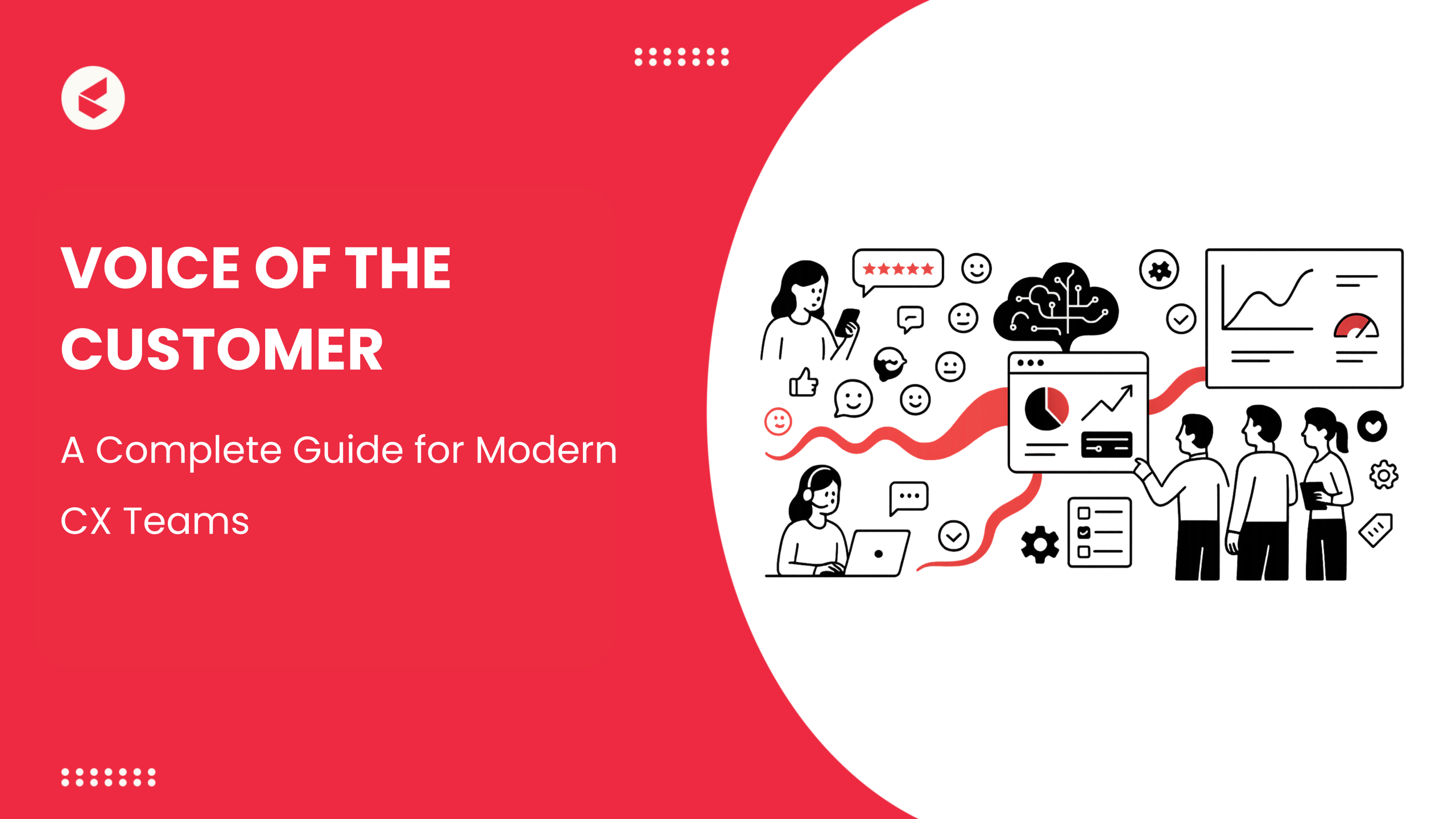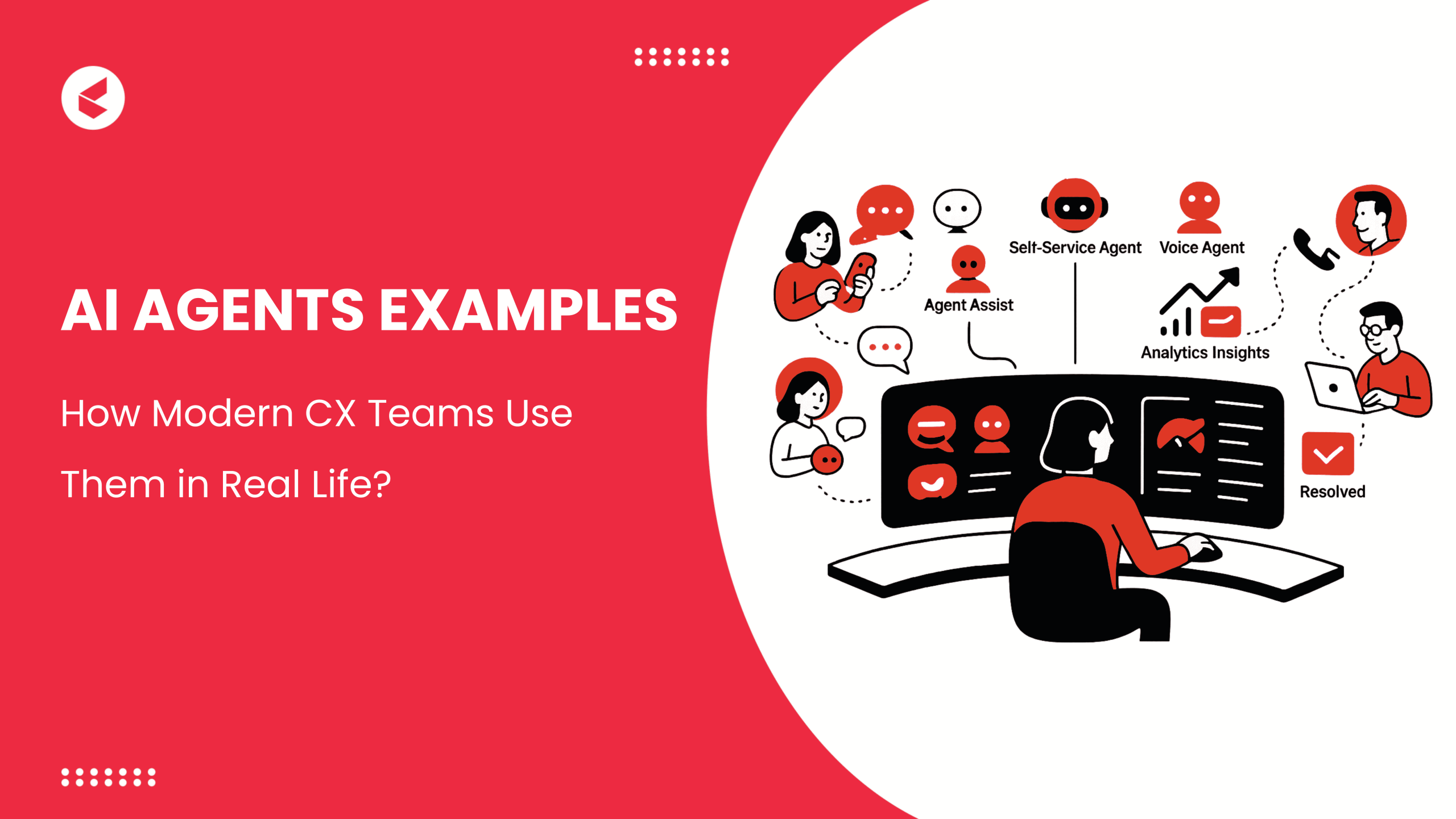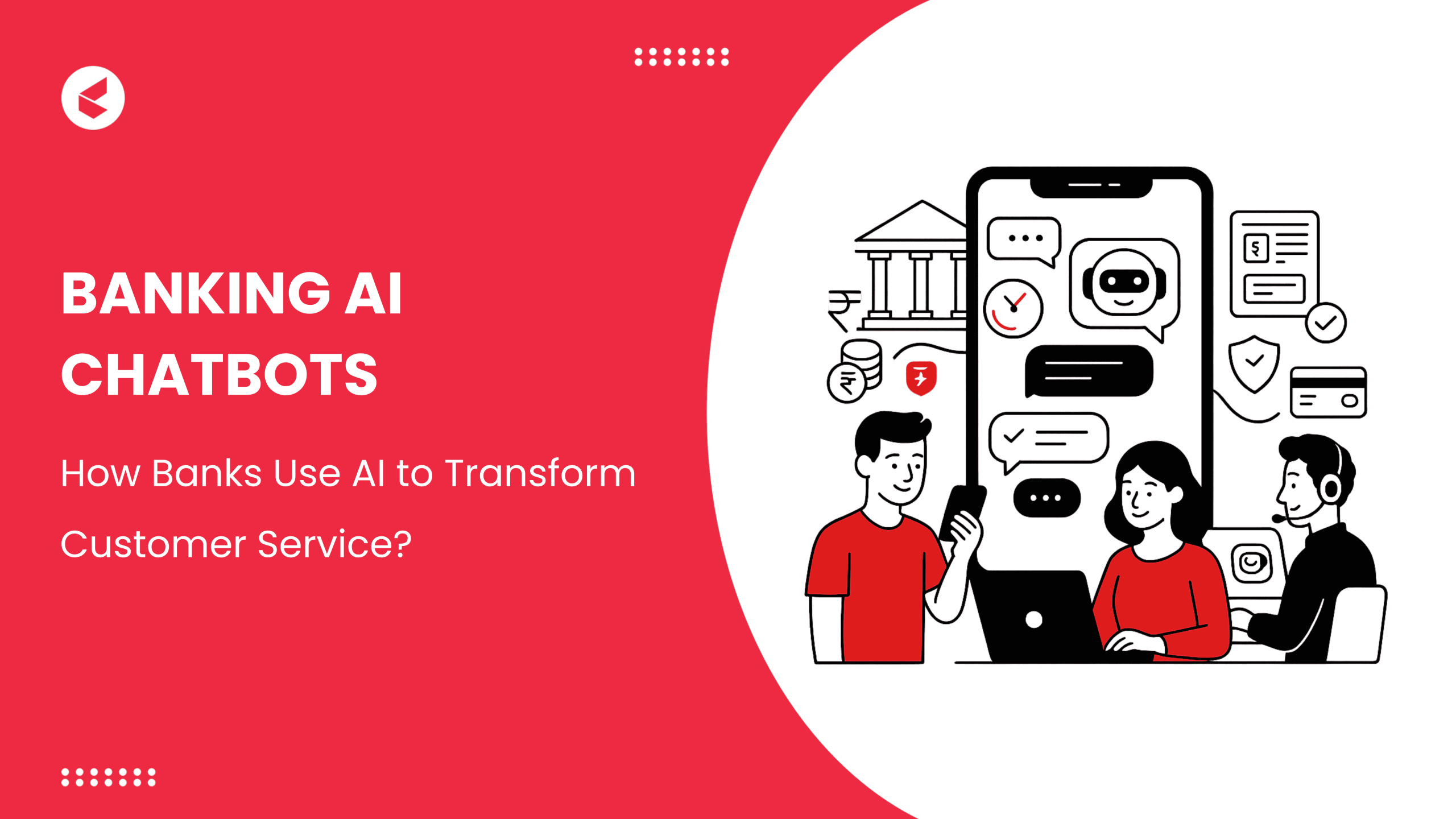Today’s customers rarely pick up the phone or write emails. Most prefer sending a quick message—on WhatsApp, Instagram, or SMS—wherever it’s convenient. And they expect businesses to respond just as fast, often on the same platforms. That shift is changing how customer experience teams work. In fact, according to a report by the Qualtrics XM Institute, 62% of consumers, on average, prefer reaching out to companies through real-time, human-assisted channels like live chat or phone.
That’s where Gupshup came in. As a messaging API provider, it’s been helping companies manage messages across different apps. It offers tools for automation, bot building, campaign setup, and basic analytics. For a lot of teams, especially those with technical support, it’s been a solid option.
Still, it’s not always the right fit. Some businesses want something more intuitive. Others need deeper CRM connections or an easier setup. That’s why many are now looking into Gupshup alternatives—tools that match their current goals without requiring extra development or workarounds.
Why Businesses Look for Gupshup Alternatives?
Gupshup has its strengths, no doubt. But many teams eventually outgrow it. As business needs evolve, so do expectations from messaging platforms—and not all are met by Gupshup.
1 . Cost Considerations
If you’re a smaller team, pricing can be a dealbreaker. Some platforms, like Brevo, offer a similar range of features at a lower cost. For companies watching spending closely, that’s a simple reason to start looking elsewhere.
2. User Experience and Setup
Gupshup’s not exactly plug-and-play. For folks without dev resources, getting campaigns or workflows up and running can take time. Other tools, like MessageBird and WATI, just feel easier out of the box—less friction.
3. Features and Flexibility
A lot of teams now expect built-in AI, channel switching, and smooth CRM tie-ins. With some Gupshup competitors, those things are ready on day one. Gupshup may require further configuration to achieve this.
4. Support
Support matters, and when response times drag or the help isn’t detailed, teams move on. It’s one of the most common reasons people try other tools.
Businesses are increasingly valuing platforms that empower non-technical users to take ownership of customer messaging. While Gupshup caters well to developers, many support, marketing, and CX teams are looking for tools they can manage independently—without constant dev intervention.
5 Key Features to Compare When Choosing Gupshup Alternatives
When exploring alternatives to Gupshup, it’s worth focusing on more than just feature checklists. The best choice is one that aligns with how your team works today and where you want to take your customer communication efforts in the future. Here are the key features to assess:
1. Channel Coverage
Start by checking which messaging channels are supported. While WhatsApp and SMS are a given, you may also want support for Facebook Messenger, Instagram, or Google Business Messages. Some platforms go further with voice, email, or in-app chat.
2. Automation and AI Tools
Look at how the platform handles automation. Features such as custom chatbots, intent detection, smart replies, or conversation routing can save time and improve response quality.
3. CRM and Tool Integrations
A good messaging platform should plug directly into your CRM, support system, or marketing stack. Native integrations reduce manual effort and help maintain a smooth customer experience.
4. Interface and Usability
Go for a tool that’s easy to get around and doesn’t take ages to figure out. The layout should make sense to your team, especially if you’re not planning to spend weeks on training.
5. Pricing and Scalability
Pay attention to how pricing works, whether it’s based on messages, users, or API calls. A transparent model that scales with your business is easier to manage over time.
6. Support and Reliability
Slow platform-level support is one of the top-cited frustrations in G2 and Capterra reviews of developer-first messaging tools like Gupshup.
Top 9 Gupshup Alternatives for Enhanced Customer Experience
A growing number of companies are turning to other platforms that offer more flexibility, better integrations, or a stronger focus on customer experience. Here are nine alternatives that bring their own strengths to the table.
1. Kapture CX
Kapture CX is built to streamline customer support by combining smart ticketing, voice AI, CRM integration, and no-code automation in one platform. It helps teams manage conversations across chat, email, voice, and social channels without juggling multiple tools. With everything connected, agents can work faster, resolve issues more efficiently, and deliver a consistent experience across every touchpoint.
Best For:
- Mid-to-large businesses across industries like retail, BFSI, travel, and consumer goods, especially those with growing support volumes and a need for unified operations.
CX Value:
- Kapture CX reduces manual workloads through automation; one Q-commerce brand saw a 98% bot resolution rate and cut handling time from 6 minutes to under 50 seconds.
- Its AutoQA feature also ensures service quality by giving agents real-time feedback based on performance.
Why It’s a Gupshup Alternative:
Gupshup is primarily designed around messaging APIs, making it a strong fit for developer-led teams. In contrast, Kapture CX offers a ready-to-use platform built for support teams, with features like smart ticketing and automation available out of the box. It’s a practical choice for non-technical users who need to get started quickly without heavy configuration or custom development.
2. Twilio
Twilio is one of several Gupshup conversation cloud alternatives that let developers build messaging, voice, video, and email experiences using a flexible API stack. It powers everything from alerts and reminders to full-scale customer engagement systems across channels.
Best For:
- Enterprises and product teams that need complete control over their communication flows, especially those building custom solutions from the ground up.
CX Value:
- With tools like Segment and CustomerAI, Twilio helps brands personalize every message based on real-time data.
- Its automation capabilities also improve speed and reduce the workload on live agents.
Why It’s a Gupshup Alternative:
Twilio gives you the tools to build exactly what your business needs, making it a solid choice for teams with strong technical support. It’s highly flexible and works well for complex use cases across multiple channels. That said, the setup often demands developer time and effort. For businesses that want something faster to deploy and easier to manage day to day, a more ready-to-use platform might be a better match.
3. MessageBird
Teams using MessageBird don’t need to switch between tools to reply to customers. Whether it’s SMS, email, WhatsApp, or a quick call, it all shows up in one place. That alone saves a lot of time—and reduces things slipping through the cracks.
Best For:
- Companies of any size looking for a no-code, quick-start way to run multichannel messaging campaigns and support.
CX Value:
- MessageBird’s Flow Builder makes it easy to automate conversations based on triggers or customer actions.
- Its omnichannel inbox helps support agents stay on top of requests without juggling tabs or tools.
Why It’s a Gupshup Alternative:
While Gupshup is built for developers and API-first use cases, MessageBird is built with usability in mind. It’s better suited for teams that want to get started quickly without relying heavily on technical setup or code.
4. Infobip
Infobip is a global messaging platform offering services across SMS, chat apps, email, voice, and mobile push notifications. It’s widely used by businesses with international customer bases and complex communication needs.
Best For:
- Enterprises operating at scale, particularly those working across multiple countries or with strict compliance requirements.
CX Value:
- Infobip’s Moments tool allows teams to set up targeted, automated customer journeys.
- Its Conversations product brings support channels together, so agents can engage customers in real-time from one screen.
Why It’s a Gupshup Alternative:
Infobip offers broader global reach, more enterprise-grade controls, and a more mature stack for large-scale engagement. If your focus is on high-volume communication with layered workflows, Infobip provides a more scalable path forward than Gupshup.
5. Freshchat
Support teams using Freshchat can reply to customers on the website, app, WhatsApp, or Messenger—all from one screen. It’s part of the Freshworks suite and also includes basic bots and tools for sending messages to users. Built-in bots and campaign tools make it easier to stay on top of conversations without switching platforms.
Best For:
- Ideal for mid-sized businesses and fast-growing companies that want to proactively engage customers while keeping workflows simple and organized.
CX Value:
- Freshchat supports quicker responses and consistent service by combining chat automation, contextual history, and team collaboration features.
- It also helps businesses stay connected to users within apps, improving support in moments that matter most.
Why It’s a Gupshup Alternative:
Gupshup is aimed at developer-led teams that want to build custom messaging setups through APIs. Freshchat, by contrast, is a better match for support teams looking for a simple, ready-to-use solution that doesn’t require developer input. Since it connects smoothly with other Freshworks products, it’s a practical option for companies already in that ecosystem or aiming to streamline support without building everything from the ground up.
6. Intercom
Intercom offers a unified communication platform that combines live chat, customer onboarding, product tours, and automated support. It’s built to create personal and scalable customer conversations across the lifecycle, from pre-sale to ongoing support.
Best For:
- SaaS businesses and product-led companies that prioritize user engagement and need flexible, in-app communication tools.
CX Value:
- Intercom allows teams to send targeted messages, resolve queries using bots or agents, and gather insights to improve the experience.
- Its strength lies in blending automation with a personal touch, helping businesses stay responsive without burning out their teams.
Why It’s a Gupshup Alternative:
Gupshup works best for backend messaging integration, but Intercom offers a polished, front-end experience out of the box. It’s a strong choice if you want customer communication that feels more human without building every piece yourself.
7. Zendesk
Zendesk is a widely used support platform offering tools for ticketing, live chat, email support, and self-service. Everything runs through a shared workspace, giving agents context and tools to manage customer issues more effectively.
Best For:
- Enterprise teams and organizations with high ticket volumes or multiple support channels need robust, scalable solutions.
CX Value:
- Zendesk improves service speed and accuracy by consolidating interactions and automating repetitive tasks.
- Its reporting features help teams track performance and make informed decisions based on customer feedback and metrics.
Why it’s a Gupshup alternative:
Gupshup is more focused on the infrastructure behind messaging, whereas Zendesk provides a full-service customer support system ready to deploy. It’s a strong option for larger teams with complex service needs, though it might feel like too much for smaller businesses that just need the basics.
8. Tars
Tars is a chatbot builder that helps businesses create conversational workflows without needing a developer. It’s often used for lead generation, appointment booking, and handling simple support queries on websites or landing pages.
Best For:
- Marketing teams, agencies, or customer support teams that need fast deployment of chatbots to qualify leads or answer FAQs.
CX Value:
- Tars helps customers get what they need quickly by guiding them through structured conversations.
- It reduces form fatigue and supports wait times, especially on landing pages where clarity and speed drive conversions.
Why It’s a Gupshup Alternative:
Where Gupshup provides APIs for developers to build bots, Tars skips the code and offers a visual interface. It’s best suited for teams that want to quickly deploy conversational bots without writing code but limited to chatbot-driven use cases rather than broader customer service needs.
9. Brevo
Brevo, formerly known as Sendinblue, is built for businesses that prioritize marketing communications. It combines email, SMS, live chat, and automation tools in one place, making it a solid choice for teams focused on campaigns and outreach. While it offers some customer interaction features, it’s not designed as a full-scale customer support platform.
Best For:
- Small and mid-sized companies that need easy-to-use tools for both marketing and transactional messaging.
CX Value:
- Brevo helps businesses stay relevant in how they reach out to users with features like segmentation, automated workflows, and personalized content.
- Its CRM and campaign tracking tools give teams more control over messaging strategy.
Why It’s a Gupshup Alternative:
Gupshup is more suited for developers building messaging into apps or systems. Brevo, on the other hand, offers out-of-the-box solutions for marketers. It’s a good fit for teams looking to run outreach and manage engagement without building their own tools.
Comparison Table of Gupshup Alternatives
| Platform | Best For | Multi-Channel Support | AI and Automation | CRM Integration | Ease of Use | Unique Advantage |
| Kapture CX | Enterprises seeking unified CX management | Yes | Advanced | Native integrations | User-friendly | Comprehensive CX suite with AI-driven insights |
| Twilio | Developers needing customizable solutions | Extensive | Customizable | API-based | Requires coding | Highly flexible API for tailored communication flows |
| MessageBird | Businesses aiming for omnichannel outreach | Broad | Visual flow builder | Wide integrations | Intuitive interface | Unified platform with seamless channel integration |
| Infobip | Large enterprises with global operations | Global | Robust | Extensive options | Complex setup | Scalable solution with strong international support |
| Freshchat | SMBs seeking proactive engagement tools | Web & mobile | AI-driven bots | Freshworks suite | Easy to deploy | Integrated live chat with automation capabilities |
| Intercom | SaaS companies focusing on user onboarding | In-app & web | Conversational bots | CRM integrations | Modern UI | Personalized messaging with behavioral triggers |
| Zendesk | Enterprises needing comprehensive support | Email, chat, voice | Workflow automation | Extensive CRM links | Steeper learning curve | Full-featured support system with analytics |
| Tars | Marketing teams deploying chatbots | Limited | No-code builder | Basic integrations | Drag-and-drop | Quick deployment of conversational landing pages |
| Brevo | SMEs managing marketing communications | Email, SMS, chat | Marketing automation | CRM functionalities | User-friendly | All-in-one platform for marketing and communication |
Benefits of Switching to the Right Alternative
Switching to Gupshup alternatives that better fit your team’s workflow can lead to more effective communication and stronger results. Here’s why you should:
1 . Improved Customer Engagement
Support tools like Intercom and Freshchat give your team an edge with smart replies and proactive messaging, so they can handle more chats while keeping responses accurate and timely.
2. Smarter Use of Data
Many alternatives come with built-in analytics and CRM integrations. That means you can track customer journeys, see where people drop off, and understand what’s working—all from one place. These insights make it easier to fine-tune your connection with your audience.
3. Easier to Use, Easier to Scale
For many support teams, Zendesk and MessageBird strike the right balance—they’re simple enough to use without much training and still strong enough to grow with the business.
Conclusion
Your support tools should match how your business works today. When Gupshup stops meeting your team’s needs, exploring a more suitable alternative becomes a practical next step.
Platforms like Kapture CX are built with evolving teams in mind. Instead of piecing together APIs and third-party add-ons, it brings customer data, conversations, automation, and reporting into one system. This makes it ideal for CX leaders to roll out a complete solution quickly without long setup times or added technical layers.
You don’t have to overhaul everything at once. Start with a closer look at how Kapture CX fits into your existing setup. It’s a practical next step for teams that want more control, faster resolutions, and better visibility without creating extra overhead.
Book a personalized demo and find out how Kapture CX can simplify your support operations.
FAQs
Gupshup is mainly built for developers. It gives teams a flexible way to set up messaging infrastructure, but that usually means coding and integrations. Kapture CX is a full platform out of the box. It’s set up with support teams in mind, combining ticketing, automation, and reporting—all within a single workspace.
Kapture CX supports a true omnichannel setup by bringing together messages from WhatsApp, email, live chat, and other platforms into one interface. This helps support teams stay on top of conversations without switching tools, making it easier to deliver consistent service across all customer touchpoints.
Start by looking at what your team actually needs day to day. If managing conversations feels too manual, or if you often depend on technical help just to make changes, that’s a sign you may need a more user-ready platform. Kapture CX is designed to reduce that overhead.
That depends on your setup. If you’ve built custom flows or deep integrations, the switch will need planning. But many platforms—including Kapture CX—offer onboarding support, so your team isn’t left figuring it out on their own.
Yes. Most platforms now include ready-made connectors for CRMs and other business tools. Kapture CX supports this as well, helping you keep data aligned without extra effort.













